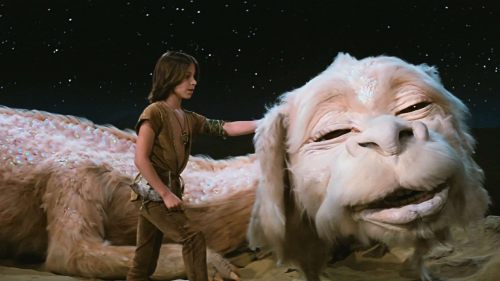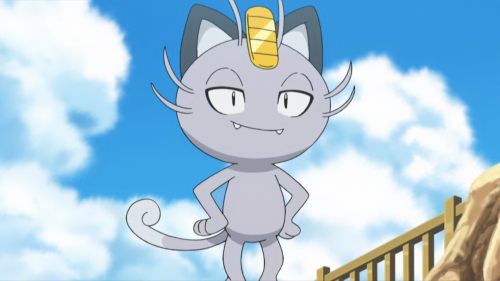The Complex And Layered Villains Of POKÉMON
Detective Pikachu hits this week. Get your tickets here!
Fair Warning: This article will contain spoilers for the mainline Pokémon games.
Every flagship Pokémon game (those released as a pair of interconnected games, and any direct follow-ups to that pair), from 1996’s Japanese-only Red and Green to 2017’s Ultra Sun and Ultra Moon, tells a similar story. The player’s character is a young Pokémon trainer who seeks to compete in the region’s Pokémon League. After receiving their first Pokémon from a friendly scientist, the trainer travels the continent. They catch and raise Pokémon of all sorts, and challenge League gyms to test their growing skill. They repeatedly clash with a rival or rivals, whose personalities run the gamut from “childhood best pal” to “vicious hooligan.” The trainer’s journey reaches its climax when they challenge the League’s four greatest trainers. After besting those Elite Four, the trainer faces the League’s Champion – a superbly talented trainer who may have served as a mentor during their journey. By defeating the Champion, the trainer earns the coveted title of Pokémon Master. Over the course of their long quest, the trainer will have grown as a person. They’ll have raised Pokémon they care deeply for. They’ll have learned more about – and maybe even solved a few of – the many mysteries of their wide and wonderful world. And they’ll have almost singlehandedly wiped out a major criminal organization or two.
While more recent Pokémon games have been more narratively driven than earlier counterparts, they are first and foremost fairly broad tales meant for the franchise’s primarily young audience. The pattern described above has endured for a reason – it’s a clear, easy to follow, point A to point B frame. But within its contours lies space that the series’ creative team has increasingly used to add complexities and layers that make the games’ stories a richer and more rewarding experience. And the best place to look for them is in the parts of each game dedicated to its villainous team.
Team Rocket, Pokémon’s original gaggle of goons, remains amongst its most openly criminal. It’s dedicated to accruing wealth and power, whether through shady-but-not-technically-illegal means (selling rare fossils) or full-on-force (attacking and taking over a major corporation and later a radio tower). Its leader, Giovanni, believes himself to be the most powerful person in the world. Upon being repeatedly defeated by the player character, his confidence is rattled enough that he disbands the organization and embarks on a journey to train and become stronger so that no one will be able to challenge his right to the world and all its riches. Giovanni’s priority is proving his own strength, first to himself and then to the world. He abandons his own child (the player’s rival in Gold, Silver, Crystal and their remakes) in favor of first running his syndicate and then training (and he’s one of the better parents amongst Pokémon’s villains). Come Ultra Sun and Ultra Moon, he makes his return to crime in as grandiose a fashion as possible – recruiting the heads of Pokémon’s later villainous teams as his lieutenants and making a serious play for multiversal conquest. This isn’t just a scheme, it’s a statement of identity.
Teams Aqua and Magma, the first post-Rocket villains of the series (from Ruby, Sapphire and their remakes), are best described as “well-meaning but utterly reckless eco-terrorists.” Each believes wholeheartedly that if humans and/or Pokémon are to flourish, then the Hoenn region’s ecosystem must be dramatically altered. Team Aqua wishes to increase Hoenn’s oceans, so that Pokémon would have an ecosystem less affected by humans. Team Magma wishes to increase its landmass, so that humanity can push itself further still. Both seek to do this by awakening long-dormant legendary Pokémon (Kyogre and Groudon) whose abilities could make their dreams a reality. That casually messing with nature on a massive scale might go badly does not register for either Team’s leader until Hoenn is in danger of being torn asunder. Where Giovanni believes only in himself, Aqua and Magma’s leaders Archie and Maxie are sincerely dedicated to their cause. And when faced with the borderline disastrous consequences of their actions, they are actually able to realize their error and (in the Omega Ruby and Alpha Sapphire versions of the game) give the player what aid they can in stopping Groudon and Kyogre. Both men are left genuinely humbled.
Most recently, Sun and Moon introduced Team Skull. Unlike their predecessors, Team Skull is not all that dangerous or powerful on its own. They’re a gang of kids who, one way or another, ended up on the fringes of the Alola region’s society. They want to be seen, and to carve a place for themselves. Their leader, Guzma, is strongly implied to have failed at becoming a trial captain – the region’s equivalent of a gym leader. He leads Team Skull in part because he craves external validation, and in part because he and the rest of the Team genuinely care about each other, even if they aren’t always able to articulate it. Team Skull and Guzma want to be taken seriously. When Lusamine, Sun and Moon’s true villain (it’s worth noting that she is less villainous in Ultra Sun and Ultra Moon), offers Guzma external validation, he throws himself and the Team into serving her cause. That Lusamine is terrifyingly cruel and that her cause involves a destructive band of Lovecraftian Pokémon from another dimension registers to Guzma, but his need to be seen as strong overrides any concerns he may have until he finds himself stranded in said other dimension and being terrorized by said Pokémon. When all is said and done, Guzma disbands Team Skull and accepts an offer to train with one of the trial captains. His lieutenant Plumeria and the other members of the Team similarly set out to build new lives. Their goal – being taken seriously and making a place in the world for themselves – remains unchanged, but their methods of achieving it are far healthier.
Pokémon’s story engine means that each game has covered broadly similar beats. But how they cover those beats differs wildly from game to game, and story to story. There is space for character, for charm and for dimensionality. The villainous teams, from Rocket to Skull and in between, are a darn good example of just that.



